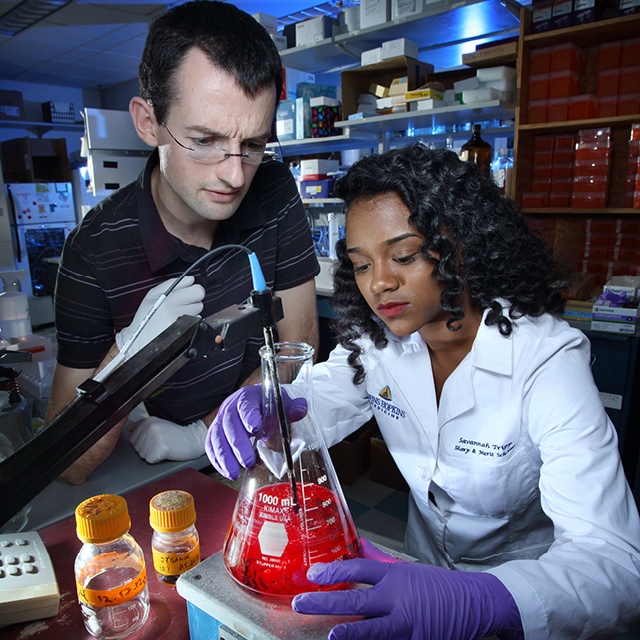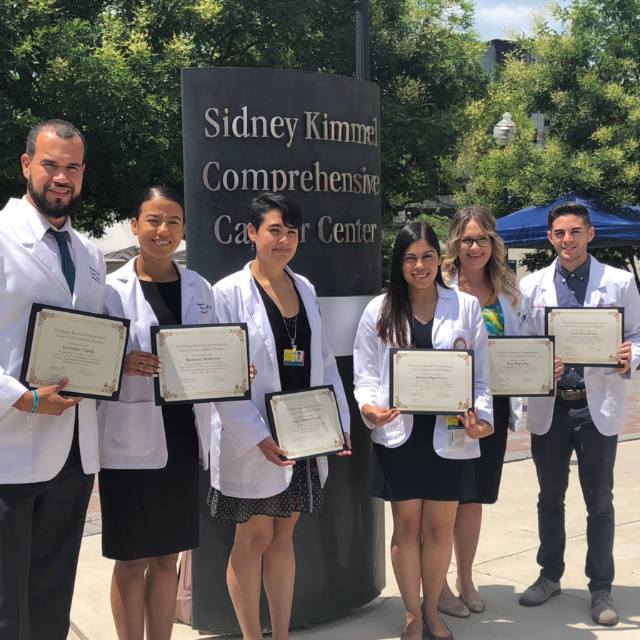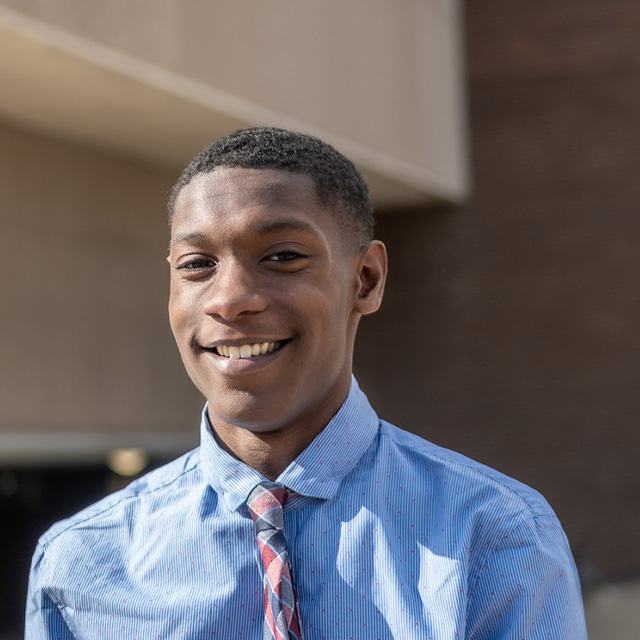(Photo: Douglas Robinson and Eleana Parajón, in the Robinson Lab.)
When Eleana Parajón was 5, her family crowded aboard a repurposed lobster boat for the dangerous 90-mile journey through the Straits of Florida from Cuba to the United States.
Parajón arrived at Key West after a full week at sea, seriously dehydrated from seasickness and sun. A doctor gave her intravenous fluids, potentially saving her life and at the same time sparking her interest in science and medicine.
Today, the 27-year-old is a third-year Ph.D. candidate in cellular and molecular medicine at Johns Hopkins, working in the lab of cell biology professor Douglas Robinson.
She owes her success to her exceptional hard work, talent and drive. She also credits the Johns Hopkins Initiative for Careers in Science and Medicine (CSM), that Robinson founded and leads.
Parajón went to Miami Dade College and won a scholarship from the Jack Kent Cooke Foundation, which allowed her to transfer to Johns Hopkins University in 2015.
It was an adjustment –her first time away from her parents, different food, and she had never seen snow before. After her junior year, she stayed in Baltimore for a summer internship, through the CSM program, in a neonatology laboratory. There, she found a mentor in Robinson.
Parajón worked in the Robinson Lab while earning a bachelor’s degree in biology and a master’s degree in molecular and cellular biology. She stayed with the laboratory for another CSM initiative, the two-year Doctoral Diversity Program, and for her doctoral work studying how pancreatic cancer cells metastasize. She plans to apply to medical schools after completing her Ph.D.
Building a Support System
Robinson started CSM in 2009, when his daughters were 7 and 9 and the family began bringing Sunday dinners to Boys Hope Girls Hope, a residential nonprofit organization that helps middle school and high school students rise above what Robinson calls “socioeconomically under-resourced” backgrounds.
“A lot of these students were coming from dire situations,” he says, speaking one afternoon in his office adjacent to the Robinson Lab in the in the physiology building on Wolfe Street. “A few said, ‘You’re at Hopkins. Can I come work at your lab?’ And we said, ‘Absolutely.’”
Robinson and his laboratory colleagues added sessions on applying to colleges, and they taught the high school students how to set up bank accounts after learning that they were taking their stipend checks to cashing services that charged high fees.
Both students in the program’s first year went on to college, and one graduated, Robinson says.
The program became the Summer Academic Research Experience (SARE). In 2015, Robinson and a team of faculty colleagues created the full CSM Initiative, adding:
· Fun with Science Camp. This one-week summer camp, led by Bin Wu, assistant professor of biophysics and biophysical chemistry, introduces Baltimore fifth-graders to science and scientists. About 15 students per year attend the camp. Free lunch is included.
· Biophysics Research for Baltimore Teens (BRBT). This program is based at the Johns Hopkins Homewood campus and led by Jungsan Sohn, associate professor of biophysics and biophysical chemistry. BRBT and SARE are each eight-week paid summer internships for socioeconomically under-resourced students, most of whom are from Baltimore. They offer a mix of academics and research, with extensive mentoring and help with college applications. Together, the programs serve about 30 students per year.
· CSM Summer Internship Program. The program’s 10-week paid summer internships for socioeconomically under-resourced college students all over the country, is led by Kathy Wilson, professor of cell biology. About 16 scholars each year live in student housing and work with a mentor on a research project, often co-authoring papers and giving presentations.
· Doctoral Diversity Program (DDP). This two-year, research-intensive paid program is for students from socioeconomically under-resourced backgrounds who are between college and medical school or a Ph.D. program. It is led by Deidra Crews, professor of medicine in the Division of Nephrology and deputy director of the Johns Hopkins Center for Health Equity. Five to eight students participate in the program each year.
Dwayne Thomas II, who grew up in Baltimore and was in Boys Hope Girls Hope, was one of the first DDP participants. He enrolled in SARE after his junior year of high school and again after his senior year. Two years after graduating from Loyola University Maryland, he applied to medical schools but didn’t get in.
While in the DDP, Thomas conducted translational research on pancreatic cancer with Christopher Wolfgang, then Johns Hopkins director of pancreatic surgery; oncology professor Lei Zheng and assistant professor of pathology Elizabeth Thompson. Also, his name appeared on three research papers, and re-took the Medical College Admission Test. Now 29, he is in his third year of medical school at Howard University and plans to become a surgeon.
“CSM provided opportunities I would not have had,” Thomas says. “I threw myself 200% in and got 200% out of it.”
After this summer, some 635 scholars will have participated in one or more CSM programs, with many going on to top-ranked colleges and medical schools, says Robinson. And he is working to expand the program beyond Johns Hopkins, with the goal of making it a truly national pathway for scholars to achieve STEMM (science, technology, engineering, math and medical sciences) careers.
“Our scholars are super smart, they’re kindhearted, they are gracious and they are motivated,” Robinson says. “How can you not want to help someone like that make the world a better place? Every young person should have the opportunity to pursue their dreams, especially in the areas of STEMM.”




